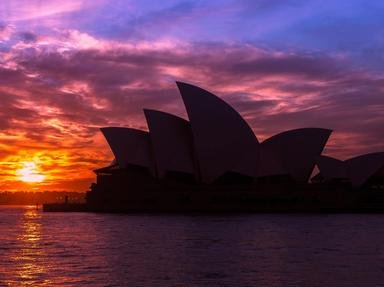Quiz Answer Key and Fun Facts
1. Dating back to the early days of the colony, the Sydney Hospital is the oldest building of its kind in Australia. Because the British government refused to release the funds to construct it, Governor Macquarie did a deal with a consortium of Sydney businessmen instead. They agreed to build the hospital if Governor Macquarie gave them a monopoly on the import of which product?
2. This beautiful old Sydney building is the oldest cathedral in Australia. With a name suggesting connections to Scotland, what is it called?
3. This lovely sandstone building sits right in the centre of Sydney. It is a meeting place for many people, politicians, protesters or councillors. You name a group and they'll either be found inside making municipal decisions or outside protesting on the steps of this government facility. What is its name?
4. A beautiful garden in the heart of Sydney today was established on land that had once been a farm, and then later housed a zoo. Bearing in mind Australia's historic links to Great Britain, what are these gardens called?
5. This interesting looking building was built in Sydney between 1835-1843. It houses a very important vice-regal personage for the state of New South Wales. Who is this person?
6. This small building is now part of the much larger Sydney Conservatorium with its focus on singing and music instructions. What was this building used for originally?
7. What is unusual about this small sandstone house in Sydney?
8. This lovely old building was the third of its kind built in the early days of Sydney. Now used as a museum, what was its original purpose?
9. Situated in Sydney, this is the oldest building of its kind in Australia. Founded in 1850, what does its architectural style suggest?
10. Known for the most part as town houses today, the older parts of Sydney were once filled with these gracious and lovely rows of houses. What were they called?
Source: Author
Creedy
This quiz was reviewed by FunTrivia editor
bloomsby before going online.
Any errors found in FunTrivia content are routinely corrected through our feedback system.


